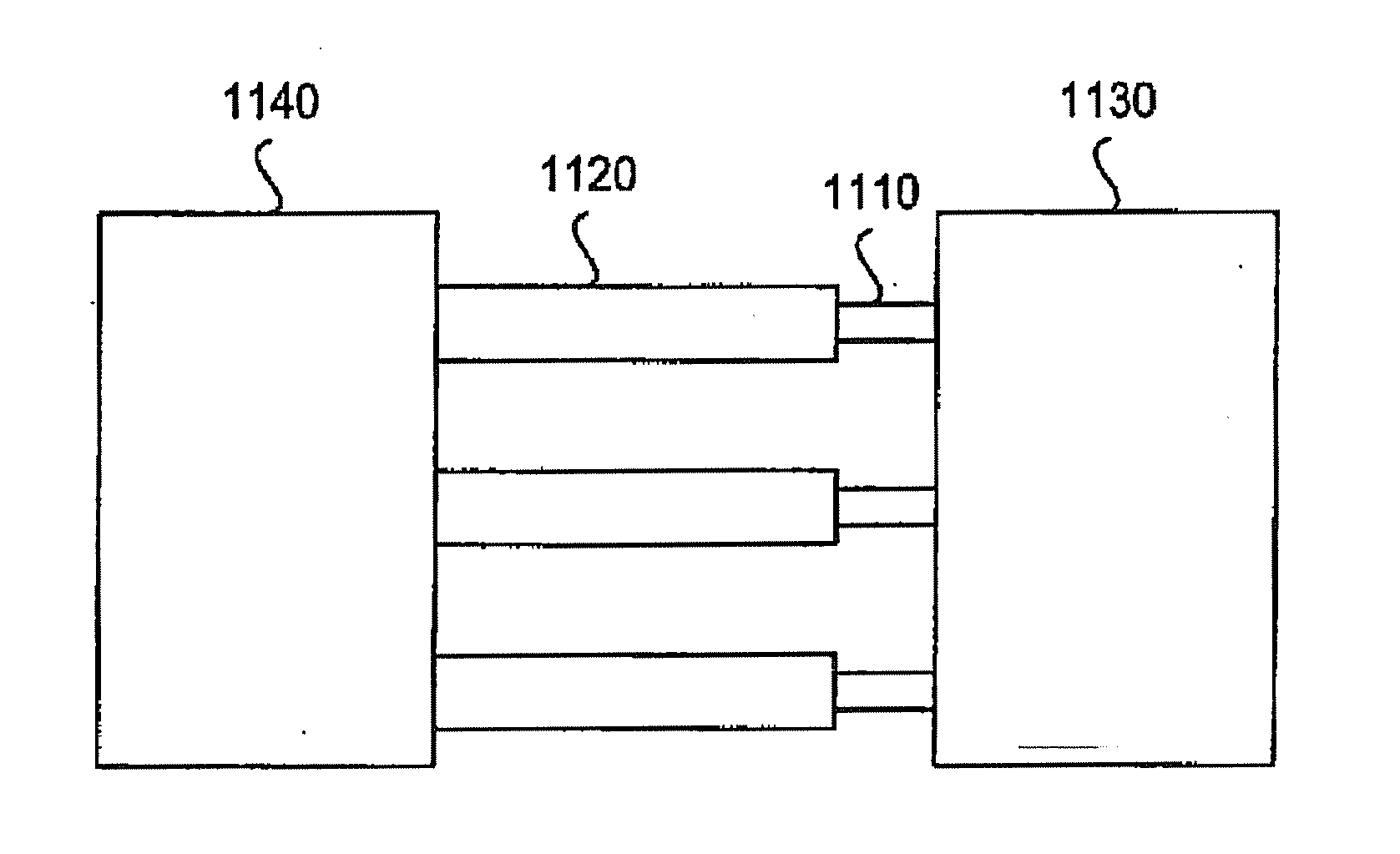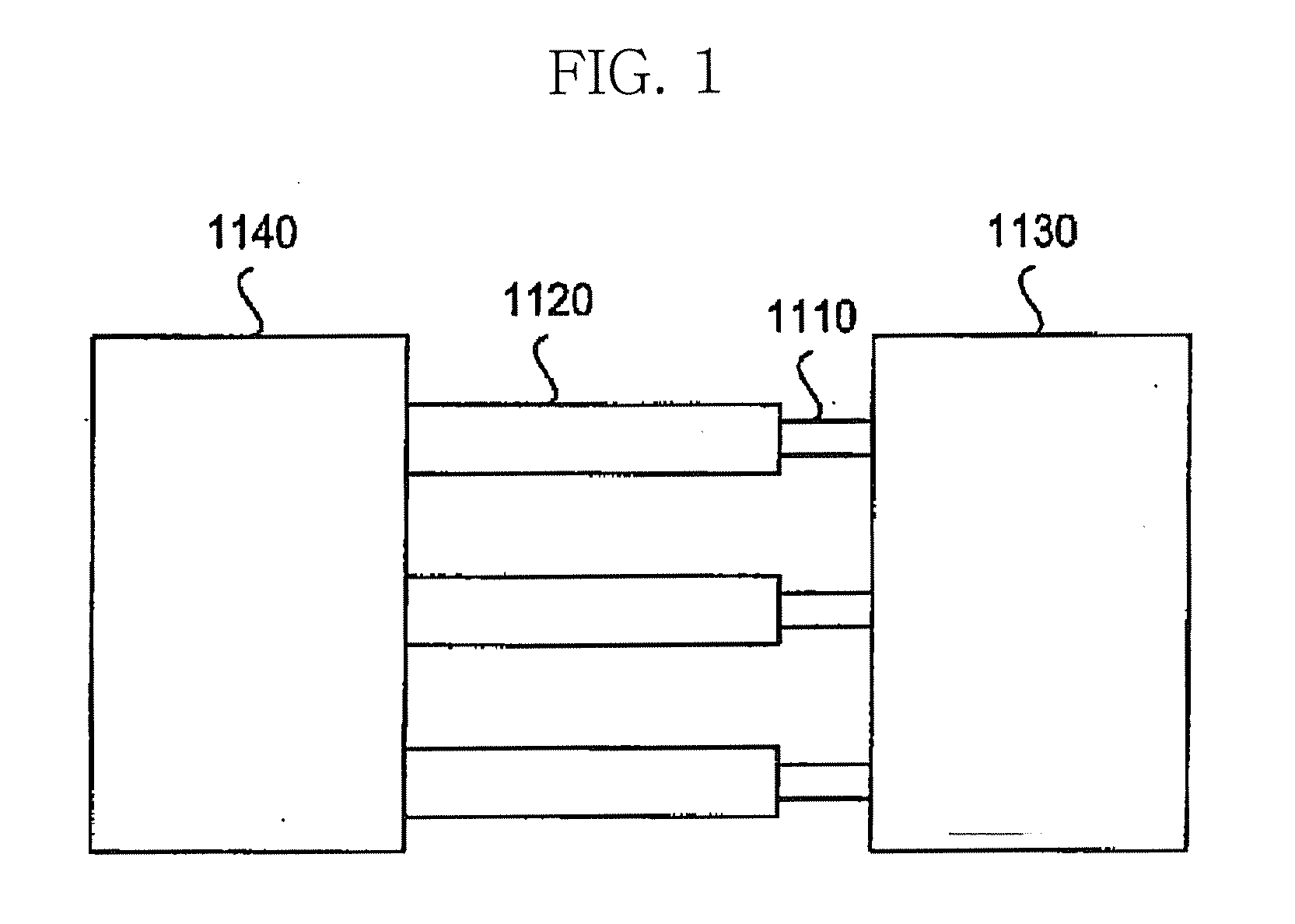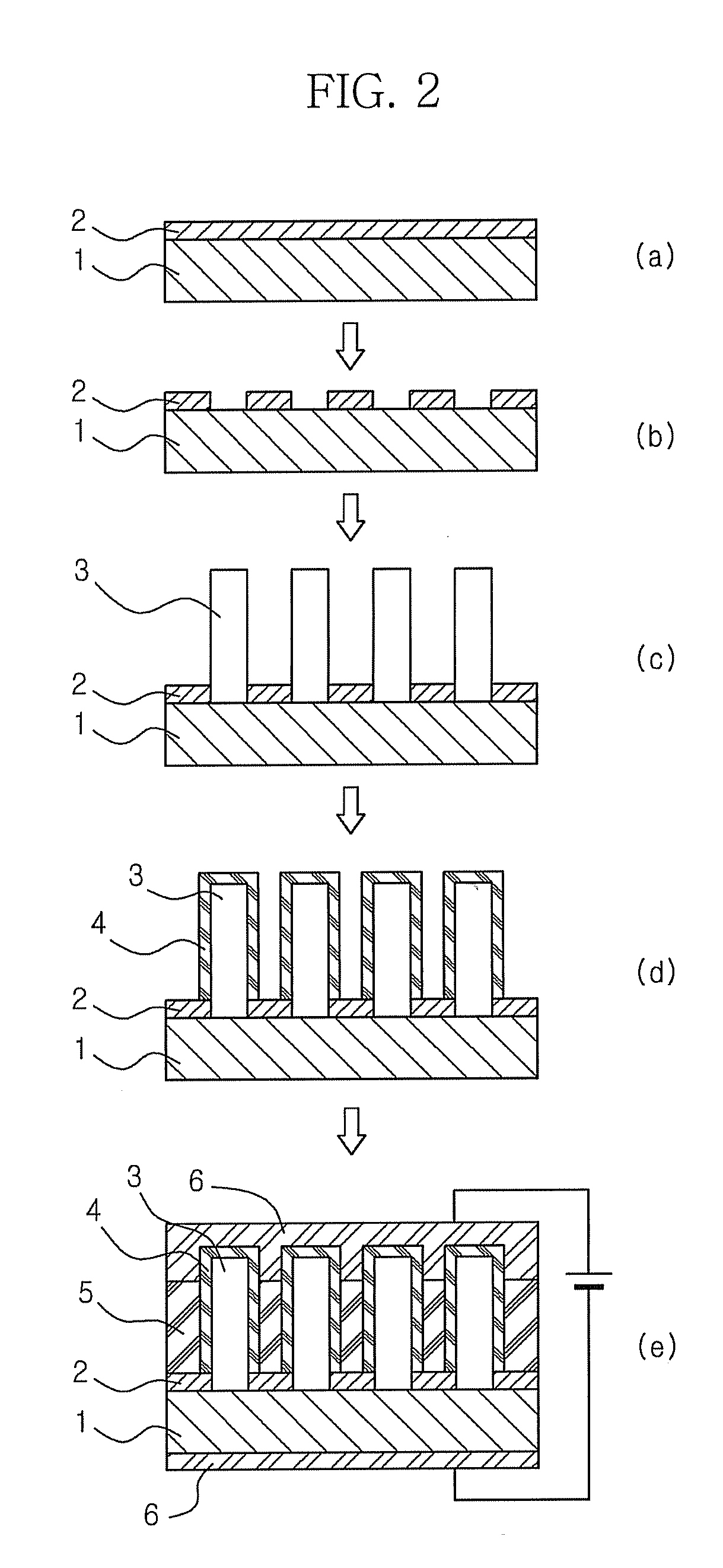Method for producing core-shell nanowires, nanowires produced by the method and nanowire device comprising the nanowires
a nanowire and nanowire technology, applied in nanoinformatics, instruments, optical elements, etc., can solve the problems of inability to achieve a three-dimensional vertical structure, no satisfactory results are achieved in the development of a technology,
- Summary
- Abstract
- Description
- Claims
- Application Information
AI Technical Summary
Benefits of technology
Problems solved by technology
Method used
Image
Examples
example 1
Production of Silicon Nanowires
[0101]A natural oxide film of an electrically conductive silicon substrate was removed by cleaning with an organic solvent and hydrofluoric acid. Gold (Au) nanoparticles (Nipponpaint) as catalysts were spin-coated or E-beam deposited on the clean silicon substrate to form a thin film having a thickness of about 30 nm. A SiO2 oxide film was deposited to a thickness of 1 μm on the thin film. Thereafter, a photoresist (AZ-1512, Clariant) was spin-coated on the SiO2 oxide film, exposed to light using a UV-exposure system (Oriel) as a light source through a photomask, and developed to form a pattern. The exposed areas of the SiO2 oxide film, from which the photoresist was removed, were etched with a hydrofluoric acid solution to expose areas of the catalyst layer. Subsequently, the resulting structure was put into a furnace and heating at a rate of 10-15° C. / min. while feeding diluted SiH4 as a precursor for nanowires and BH3 as a dopant at a flow rate of 1...
example 2
Fabrication of Vertical EL Light Emitting Device
[0102]A vertical EL light emitting device was fabricated by filling polyimide as an insulating material between the nanowires produced in Example 1 and forming ITO electrode layers on top of the first nanowire shells.
example 3
Fabrication of Horizontal EL Light Emitting Device
[0103]A horizontal EL light emitting device was fabricated by removing the substrate from the nanowires produced in Example 1 to leave the nanowires only, arranging the nanowires parallel to one another, and adhering electrodes to the nanowires.
[0104]According to the method of exemplary embodiments, core-shell nanowires whose density and position is controllable can be produced in a simple manner. The vertical arrangement of the nanowires in a three dimensional array leads to an increase in light emitting / receiving area, which enables the fabrication of high-luminance and high-efficiency devices. In addition, the intervals of the nanowires can be controlled to achieve photonic crystal effects.
PUM
| Property | Measurement | Unit |
|---|---|---|
| thickness | aaaaa | aaaaa |
| length | aaaaa | aaaaa |
| length | aaaaa | aaaaa |
Abstract
Description
Claims
Application Information
 Login to View More
Login to View More - R&D
- Intellectual Property
- Life Sciences
- Materials
- Tech Scout
- Unparalleled Data Quality
- Higher Quality Content
- 60% Fewer Hallucinations
Browse by: Latest US Patents, China's latest patents, Technical Efficacy Thesaurus, Application Domain, Technology Topic, Popular Technical Reports.
© 2025 PatSnap. All rights reserved.Legal|Privacy policy|Modern Slavery Act Transparency Statement|Sitemap|About US| Contact US: help@patsnap.com



